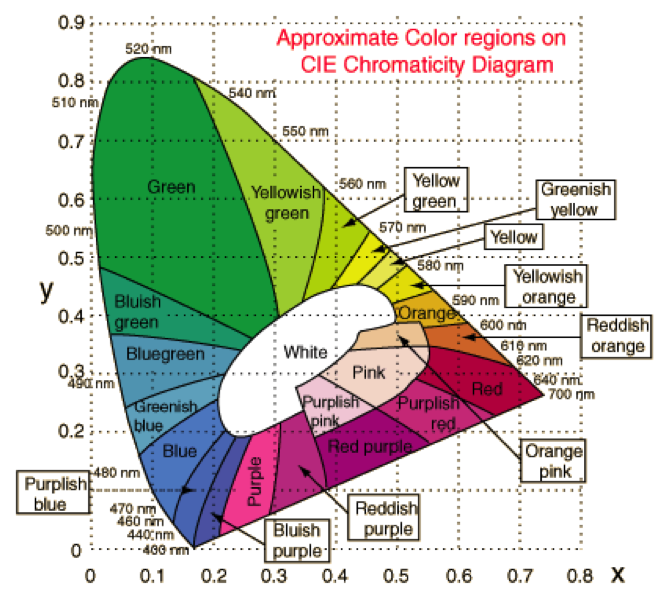
Discover the 5 Display Properties Defined by NEMA TS4
 The NEMA TS4 Hardware Standards for Dynamic Message Signs (DMS) with NTCIP Requirements is a product of the NEMA 3-TS, Transportation Management Systems and Associated Control Devices Section. It is intended to provide the user a safe, dependable, functional and easily maintained Dynamic Message Sign. To this end, the standard provides the minimum hardware and functional characteristics of electronically controlled DMS used for displaying messages to travelers.
The NEMA TS4 Hardware Standards for Dynamic Message Signs (DMS) with NTCIP Requirements is a product of the NEMA 3-TS, Transportation Management Systems and Associated Control Devices Section. It is intended to provide the user a safe, dependable, functional and easily maintained Dynamic Message Sign. To this end, the standard provides the minimum hardware and functional characteristics of electronically controlled DMS used for displaying messages to travelers.
In this blog we will examine Section 5 of NEMA TS4 which describes the elements of a DMS that define the display properties of a sign.
Display Properties
This section defines the display properties required to achieve the visibility and legibility necessary for effective communication of information to travelers. The legibility and visibility of the sign are influenced by five properties:
- Luminosity
- Chromaticity
- Viewing Angle
- Uniformity
- Contrast Ratio
Tests in Optical Laboratories: NEMA TS4 requires that each sign is tested in an optical laboratory to make ensure it complies with the minimum requirements for the 5 properties.
1. Luminosity
Luminosity is a measure of how much light is emitted by a sign or its brightness. Often this is considered the most important specification by users following the thought that the brighter the sign, the more visible it is. While it is true that luminosity contributes greatly to sign visibility (the ability of travels to determine that the sign is on), it is not necessarily the most important property for sign legibility (the ability of travelers to determine the message being conveyed). To achieve better legibility it is important that the luminosity of the sign is appropriate for the level of ambient light and that the sign is adjusted automatically depending on the ambient luminosity. NEMA TS4 defines minimum and maximum luminosity limits for each color under different ambient light conditions.
|
Color |
TS4 Minimum Requirement (cd/m2) |
|---|---|
|
Red |
3100 |
|
Green |
3720 |
|
Blue |
1240 |
|
Yellow |
7440 |
|
White |
12400 |
|
White-Yellow |
10540 |
2. Chromaticity
Achieving and maintaining the correct display colors on a DMS was a difficult challenge for years. Recent advances in LED technology have made it much easier to provide accurate and stable display colors. With the introduction of new full color DMS, chromaticity capabilities are almost unlimited - but a DMS is not a commercial sign, therefore it must comply with the chromaticity limits of NEMA TS4 for the critical colors Red, Green, Blue, White and Amber.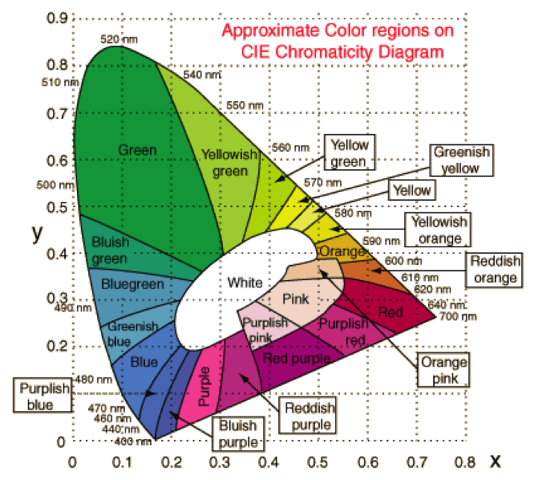
The chromaticity limit diagram CIE 1931 color space defines coordinates for each color shown above.
Chromaticity Limits:
To ensure all DMS colors are the same across the country and that displays look similar
from one vendor to another, NEMA TS4 defines coordinates for each major color:
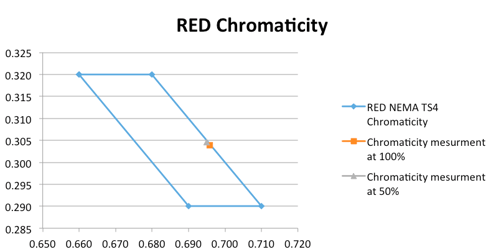
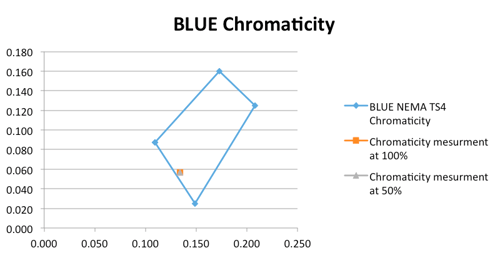
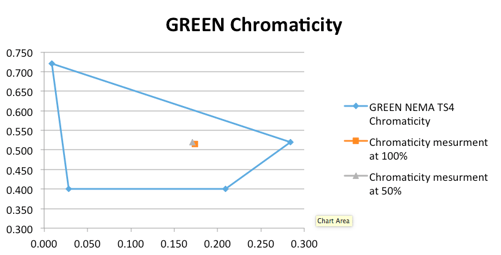
3. Viewing Angle
Depending on the application, a narrower, more energy-efficient viewing angle may be a better fit to your needs. A viewing angle of 15° is enough for up to 3 lane road, while 30° is recommended for wider roads.
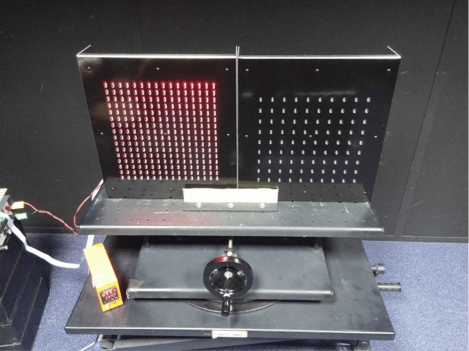
Tests feature used in Optical Laboratory to measure the viewing angle
4. Uniformity
A blotchy or uneven appearance on a sign is a distraction to the traveler and interferes with their ability to discern the message. Uniformity as defined by NEMA TS4 will guarantee that the matrix looks the same form top to bottom and from left to right.
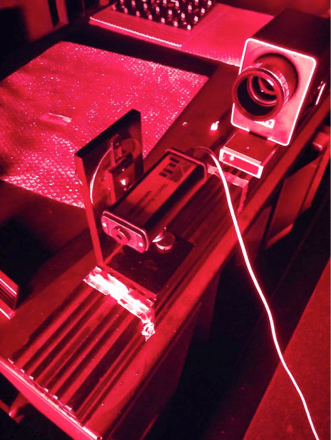
Example of Spectro-Radiometer used to measure color
5. Contrast Ratio
One of the most important, and potentially least understood, display property that contributes to a signs legibility is the contrast ratio. The contrast ratio is the ratio of the difference between the amount of light that comes off a sign display when it is off and when it is on. It is defined by the equation Cr = (Lon - Loff)/Loff, where Cr = contrast ratio, Lon = measured luminance from the display with the pixels active, Loff = measured luminance from the display with the pixels inactive. The higher the contrast ratio the easier it is for travelers to read and understand the message. NEMA TS4 provides contrast ratio requirements for the different colors under different sign luminance conditions.
|
Color |
Minimum Contrast Ratio Requirements |
|---|---|
|
Red |
2,5 |
|
Green |
3 |
|
Blue |
1 |
|
Yellow |
6 |
|
White |
10 |
|
White-Yellow |
8,5 |
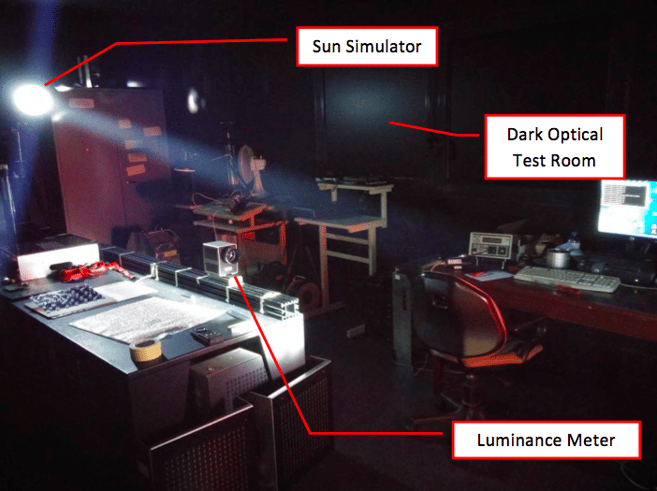
Optical Laboratory equipped with projector to simulate the sunlight (up to 40,000 Lux) and the Luminance Meter to measure luminosity
Conclusion
NEMA TS 4 is the predominant industry standard for DMS performance. Compliance with the requirements of this standard go a long way to ensuring the user is able to procure a DMS that is safe, effective, and reliable. Many times the focus of the specification effort is on the environmental and mechanical aspects of the sign. While these are important concerns, the performance of the display properties determines not only how good the sign looks but how effectively it communicates information to travelers.
For more information, visit the NEMA website.



